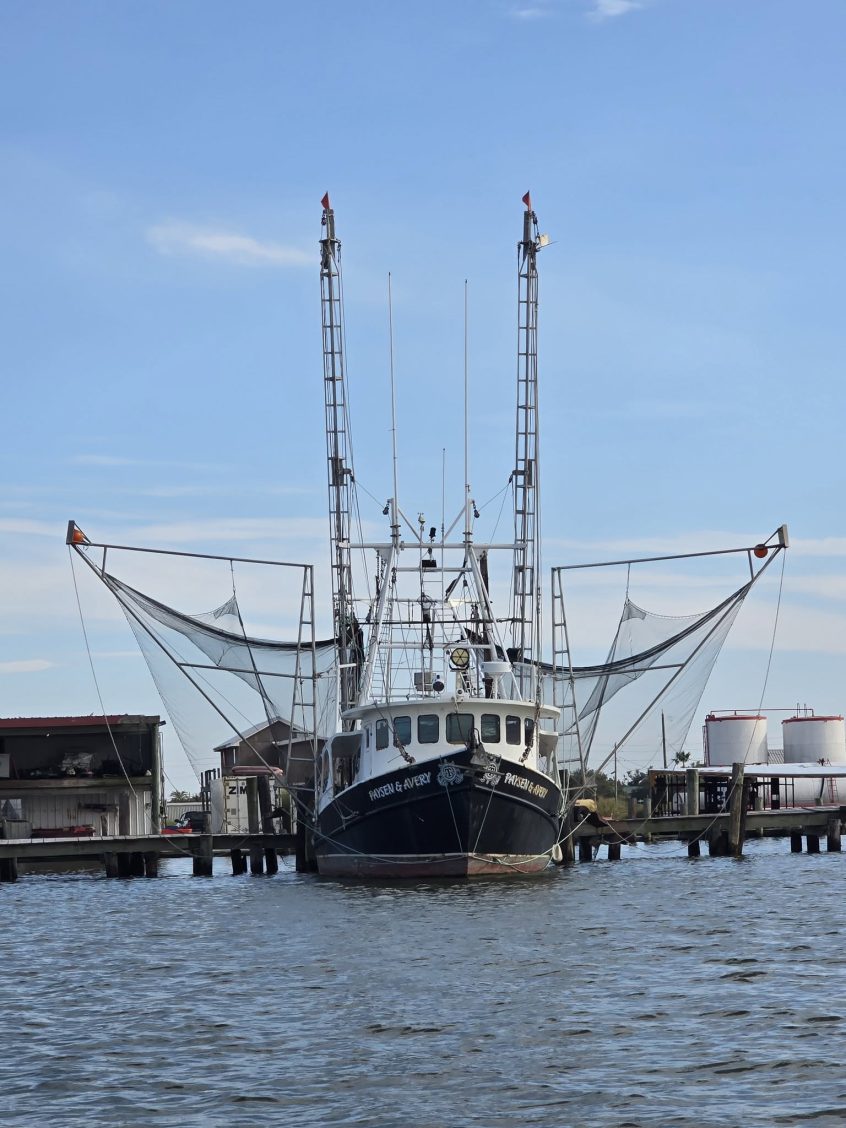I left Breaux Bridge early yesterday morning for the 3-1/2-hour drive to Grand Isle, Louisiana. The terrain through the first part of the journey was familiar to me. Miles upon miles of sugar cane, which at this time of year is beginning to be harvested. Even early morning trucks filled with cane were on the road, heading to the sugar refinery. The refineries are enormous, with smoke billowing from them. The sweet scent is distinctive and pervasive.
Once on the highway, it was a straight run to the turnoff to head south. The minute I was off the highway the scenery told me I was entering a quite different part of Louisiana. This area is one that is dependent on and ruled by water. On my way to Grand Isle, which juts into the Gulf of Mexico, I drove over an exceedingly long causeway before the final bridge leading onto the island.
My first stop was at the Grand Isle Oyster Research Lab and Hatchery. There, one of the scientists at the lab, Chris, gave me a tour. He explained the labs work, which is essential to maintaining a healthy gulf environment. Through a complex series of steps, they estimate the size and age of fish populations and assess water conditions. Sophisticated equipment is needed to go into the water to photograph schools of fish, sample fish roe to estimate the health and size of the various species of fish in this area of the gulf.
We then walked to the oyster hatchery. I will never look at an oyster quite the same way again. The lab grows perfect algae to feed and grow oyster roe. Again, the number of steps and sophistication of the process astounded me. In this hatchery they produce roughly five hundred million seedling oysters that are sold to commercial oyster farms.
At that point, I needed a break and had lunch at the Starfish restaurant. Unfortunately, I’m allergic to shellfish, so tempting as the oysters and shrimp were, I ate a basket of fresh fish and fried okra.
Grand Isle was hit by hurricane Ida in 2021, and it nearly destroyed the island. Around 2,500 structures were severely damaged, including seven hundred that were completely destroyed. Much of the island’s structures have been rebuilt, but now the buildings are on stilts, often as high as sixteen feet. The island barrier is still being worked on, with dredgers bringing in sand, massive stones being placed to collect silt and expand the shore, and a storm surge barrier being built. Lots of new structures have gone up and the island looks ready to receive visitors.
My next stop was at Grand Isle State Park, where the park manager Jerome Holmes gave me a tour on a golf cart. It’s a small, but very lovely park. The beaches are wide, with beautiful views. Even though the park doesn’t have many structures, nearly everything was destroyed by Ida, including the fishing piers. One small one has been replaced, the other remains unusable.
The final excursion was with Captain Matt around the island on a dolphin cruise. It was interesting to see the island from the water, it’s a distinct perspective. Since many of Grand Isle’s visitors come to fish, it also seemed necessary to get a sense of what the island is all about. The work on the barrier is going full steam ahead, but there is still a lot to do. We viewed Fort Livingston, which has been abandoned for more than a century and only the shell remains.
Then slowly made our way around Queen Bess Island. This whole area is a birding heaven. It’s a major migratory stopping point for many species. Yesterday there were mainly seagulls and brown and white pelicans. There were slews and I had a wonderful time photographing them. On our return to the marina, some friendly dolphins made an appearance.
Grand Isle, about which I knew nothing, has now made its way onto my, must return here list.

